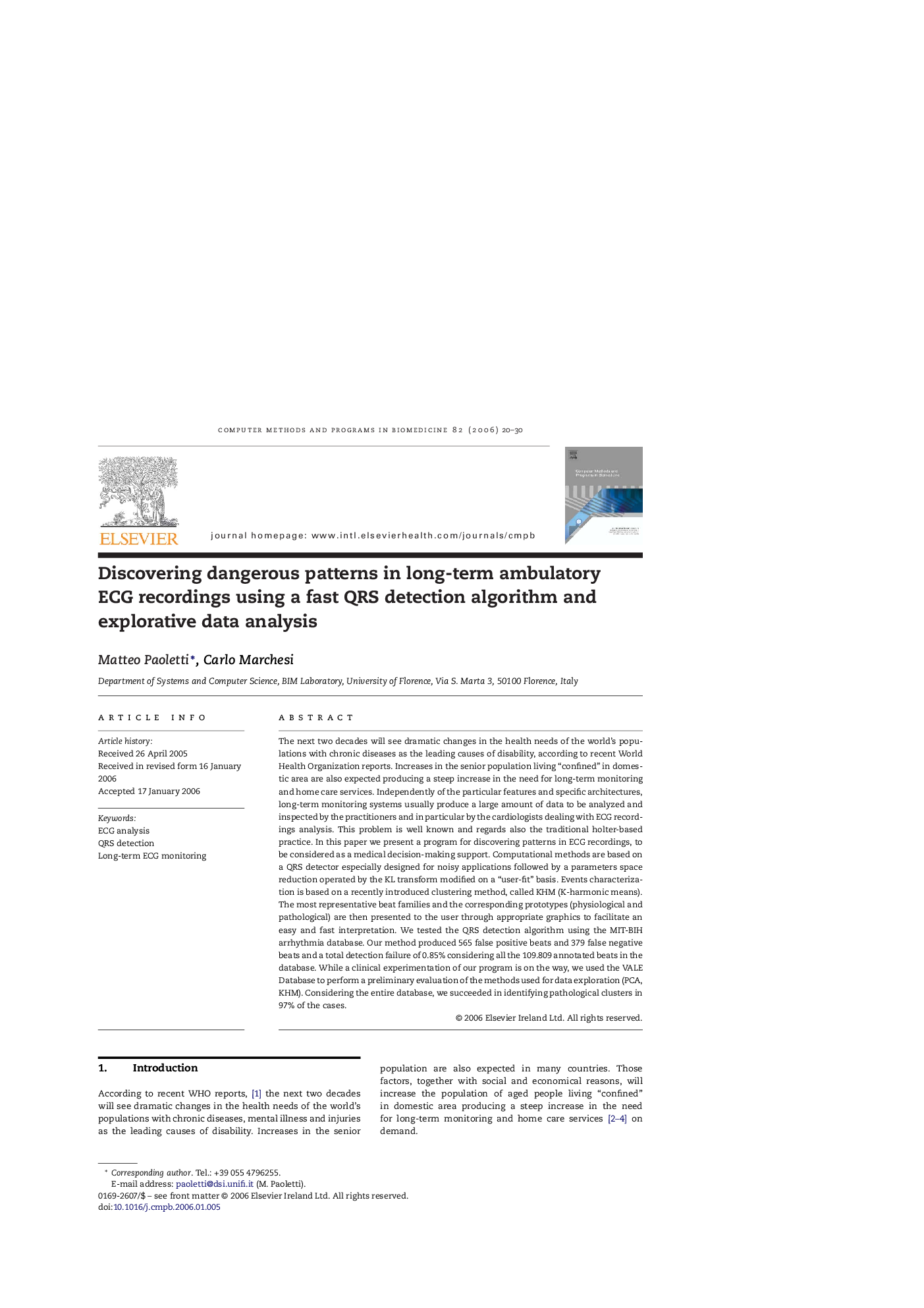| کد مقاله | کد نشریه | سال انتشار | مقاله انگلیسی | نسخه تمام متن |
|---|---|---|---|---|
| 467319 | 697939 | 2006 | 11 صفحه PDF | دانلود رایگان |

The next two decades will see dramatic changes in the health needs of the world's populations with chronic diseases as the leading causes of disability, according to recent World Health Organization reports. Increases in the senior population living “confined” in domestic area are also expected producing a steep increase in the need for long-term monitoring and home care services. Independently of the particular features and specific architectures, long-term monitoring systems usually produce a large amount of data to be analyzed and inspected by the practitioners and in particular by the cardiologists dealing with ECG recordings analysis. This problem is well known and regards also the traditional holter-based practice. In this paper we present a program for discovering patterns in ECG recordings, to be considered as a medical decision-making support. Computational methods are based on a QRS detector especially designed for noisy applications followed by a parameters space reduction operated by the KL transform modified on a “user-fit” basis. Events characterization is based on a recently introduced clustering method, called KHM (K-harmonic means). The most representative beat families and the corresponding prototypes (physiological and pathological) are then presented to the user through appropriate graphics to facilitate an easy and fast interpretation. We tested the QRS detection algorithm using the MIT-BIH arrhythmia database. Our method produced 565 false positive beats and 379 false negative beats and a total detection failure of 0.85% considering all the 109.809 annotated beats in the database. While a clinical experimentation of our program is on the way, we used the VALE Database to perform a preliminary evaluation of the methods used for data exploration (PCA, KHM). Considering the entire database, we succeeded in identifying pathological clusters in 97% of the cases.
Journal: Computer Methods and Programs in Biomedicine - Volume 82, Issue 1, April 2006, Pages 20–30